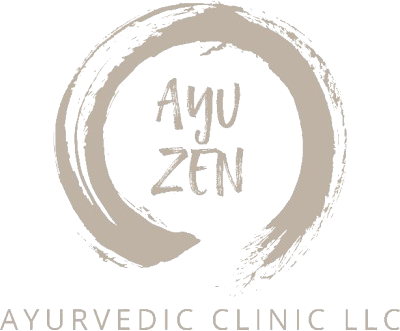In today’s fast-paced world, our bodies are constantly exposed to toxins—from unhealthy food, environmental pollution, stress, and lifestyle choices. Over time, this toxic buildup can weaken the immune system, disturb digestion, and lead to chronic fatigue, anxiety, or even disease. Ayurveda, offers a powerful and time-tested detoxification method called Panchakarma—a holistic treatment designed to cleanse the body, balance the doshas (body energies), and rejuvenate both mind and body.
Let’s explore what Panchakarma is, how it works, and why it is considered the ultimate Ayurvedic detox.

What is Panchakarma?
The word Panchakarma comes from Sanskrit—Pancha means five and Karma means actions. As the name suggests, Panchakarma consists of five therapeutic procedures that aim to eliminate deep-rooted toxins (known as ama) from the body, restore digestive fire (agni), & balance the three doshas: Vata, Pitta, and Kapha.
Unlike common detox programs that may suppress symptoms or cause temporary weight loss, Panchakarma works at the root level by purifying the body’s channels (srotas) and rejuvenating the tissues (dhatus).
Who Can Benefit from Panchakarma?
Panchakarma is appropriate for anyone looking to improve their overall health and well-being. It is especially beneficial for people dealing with:
Digestive disorders (constipation, acidity, IBS)
Stress, anxiety, and insomnia
Chronic fatigue and low immunity
Hormonal imbalances
Joint pain and inflammation
Skin issues like acne, eczema, or psoriasis
Lifestyle-related ailments such as obesity and high cholesterol
It’s also recommended as a seasonal cleanse, particularly at the transition of seasons, to maintain optimal health.
The Five Therapies of Panchakarma
Panchakarma involves five major procedures, each tailored to remove specific types of toxins and balance the body’s energies.
1.Vamana (Therapeutic Emesis)
This treatment is primarily used for Kapha-related imbalances such as asthma, bronchitis, and obesity. It involves controlled vomiting using herbal preparations to expel excess mucus & toxins from the upper respiratory and digestive tract.
Benefit: Clears the sinuses, improves digestion, and relieves congestion.
2.Virechana (Purgation Therapy)
Ideal for Pitta imbalances, Virechana uses herbal laxatives to cleanse the small intestine and liver. It helps eliminate toxins related to bile and excess heat in the body.
Benefit: Detoxifies the liver, improves skin conditions, and supports hormonal balance.
3.Basti (Medicated Enema)
Basti is the most important Panchakarma therapy for balancing Vata dosha. It includes the introduction of medicated oils or decoctions into the colon. Since the colon is the main seat of Vata, this therapy is extremely effective for nervous system disorders, arthritis, and constipation.
Benefit: Nourishes the colon, reduces dryness, improves joint mobility, and calms the mind.
4.Nasya (Nasal Cleansing)
This process involves the administration of herbal oils or powders by the nose to clear the nasal passages and sinuses. It is highly beneficial for disorders of the head and neck.
Benefit: Improves respiratory health, enhances memory, relieves migraines and sinusitis.
5.Raktamokshana (Bloodletting)
This is a more specialized treatment and not commonly used in all Panchakarma programs. It involves removing a small amount of impure blood to treat skin conditions, acne, or high Pitta disorders.
Benefit: Purifies the blood and improves skin health.
The Panchakarma Process
Panchakarma is not a one-size-fits-all approach. It is customized based on an individual’s constitution (prakriti), current doshic imbalance (vikriti), health condition, and seasonal factors. The entire process can last from 7 to 21 days and includes the following stages:
1.Purva Karma (Pre-Treatment Preparation)
This includes therapies like Snehana (internal and external oleation) and Swedana (herbal steam therapy) to prepare the body for detoxification. These procedures help loosen the toxins and move them toward the gastrointestinal tract.
2.Pradhana Karma (Main Detox Therapies)
This stage includes the five main Panchakarma procedures tailored to your specific needs. These are conducted under expert supervision to ensure safety and effectiveness.
3.Paschat Karma (Post-Treatment Care)
After detoxification, a phase of recovery and rejuvenation follows. It includes a special diet (samsarjana), lifestyle modifications, yoga, and meditation to strengthen the body and prevent the re-accumulation of toxins.
Additional Benefits of Panchakarma
Apart from detoxifying the body, Panchakarma offers a range of physical, emotional, and spiritual benefits:
Restores balance to the doshas
Boosts immunity and vitality
Improves mental clarity and emotional stability
Enhances metabolism and digestion
Supports anti-aging and skin rejuvenation
Promotes deep relaxation and stress relief
Is Panchakarma Safe?
Yes, when completed under the guidance of trained Ayurvedic practitioners, Panchakarma is completely safe and effective. It is important to undergo the procedure in a professional Ayurvedic clinic where your condition can be assessed and monitored properly.
In Conclusion
Panchakarma is not just a detox; it is a complete healing experience that resets your body, mind, and spirit. Rooted in centuries-old wisdom, it addresses the origin causes of imbalance rather than just handling symptoms. Whether you’re seeking to eliminate toxins, manage a chronic illness, or simply rejuvenate your body, Panchakarma offers a natural and profound way to restore harmony.
Reclaim your health and vitality with a personalized Panchakarma detox at Ayuzen Ayurvedic Clinic LLC—where ancient healing meets modern wellness.


